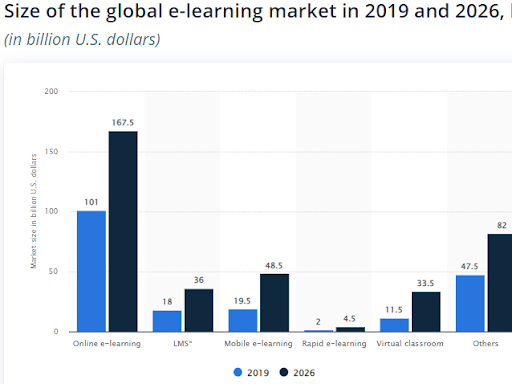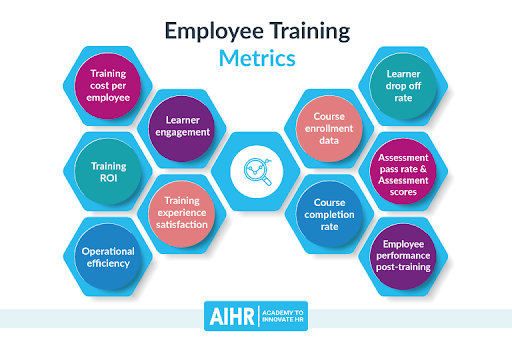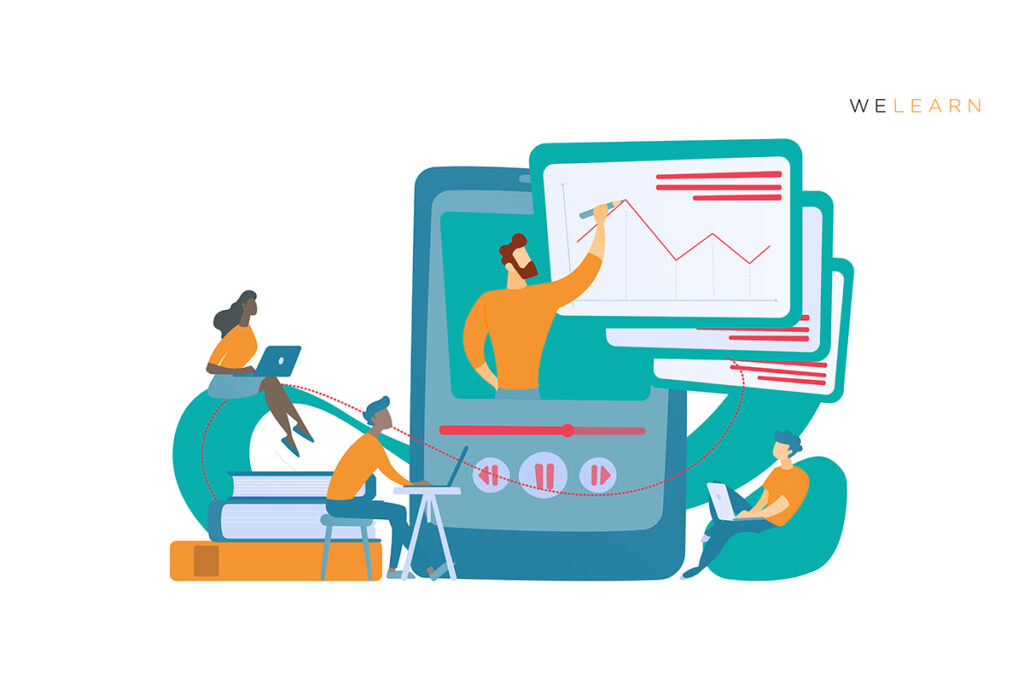Once upon a time, there was a company that wanted to develop online learning content.
They had the vision and the resources, but they didn’t know where to start.
The company knew that the development of elearning content was critical to its success, but it didn’t know how to effectively and efficiently create and manage the content.
Plus keeping up with the content development trends only added to the fear of making mistakes.
The company decided to hire an elearning content development expert to guide them through the process.
The expert gave the company a plan for the development process and helped them understand why each step was important and how to properly execute each step.
Getting Started
According to the Statista Global Consumer Survey, online training accounts for around half of all professional training courses in the world.

This number will only continue to grow.
Creating engaging online learning content can be a daunting task, but with the help of this guide, it can be a breeze.
In this blog post, we provide step-by-step instructions for developing high-quality eLearning content.
From planning and design to production and delivery, ss provides everything you need to create top-quality learning materials.
So whether you’re new to eLearning or simply looking to refine your L&D skills, this is the resource you need.
A Step-By-Step Guide To Learning Content Development
1. Set The Learning Objective
As an L&D professional, it is critical to start the process of online learning content development by determining the content’s purpose and goals.
This will ensure that the content is created in a way that meets the organization’s needs and helps to achieve the desired outcomes.
Elearning content should be created in line with the organization’s learning objectives.
It should be relevant to the audience and should allow learners to engage with the content in a meaningful way.
Moreover, it should be designed to encourage learners to actively participate in the learning experience.

The content should also be created with a clear purpose in mind. It should focus on the organization’s main goals, whether it be a specific skill, knowledge, or behavior.
According to Statista, by 2026, the global e-learning market will reach almost $400 billion. For comparison, in 2019, the market was sized at almost $200 billion.
So, when creating online learning content, it is important to consider the following factors:
- Audience: Identify the target audience, their needs (more on that below), and the level of knowledge they require.
- Content: Develop content that is relevant, engaging, and easy to follow. • Delivery: Consider the best way to deliver the content, such as online or in-person.
- Technology: Use the right technology to ensure that the content is accessible and easy to use.
By taking the time to consider the purpose, goals, and audience of the elearning content, L&D professionals can ensure that the content is effective and supports the organization’s objectives.
This will also help to ensure that the content is engaging and encourages learners to actively participate in the learning experience.
2. Identify The Learning Challenges Of The Organization
As an L&D professional, it is essential to understand your learners’ needs to effectively create learning content that meets their needs and improves their performance.
To do this, you need to conduct an efficient learning needs analysis and ask the right questions to identify the underlying problems that are causing the lack of performance.
Here are some key questions to ask in order to truly identify the challenges, why the learning performance isn’t up to the mark and the type of problem being faced:
- What are the current skills and knowledge of the learners?
- What is the desired level of performance, and how far away is the current performance?
- What type of learning content is currently being used?
- What is the current level of learner engagement?
- What is the current level of motivation among learners?
- How are the current learning activities being evaluated?
- Are there any external factors that may be hindering performance?
- What type of learning content would be most suitable for the current situation?
By asking these questions and analyzing the responses, you can get to the bottom of the learning performance issue and be able to identify the most suitable type of learning content for the learners.
Additionally, this also allows you to create learning content that meets the specific needs of the learners and increases their motivation, engagement, and performance.
3. Research And Prepare Content
Conducting research and analyzing the available content to inform the decisions for elearning development is essential for the success of any organization in 2023.
With the rapid changes in technology and the increased demand for digital learning, it is essential to stay ahead of the curve and leverage the most up-to-date learning content available.
So, consider the different learning styles, such as visual, audio, games, scenario-based training, and other forms of learning.
Instructional design involves creating the learning objectives, sequencing the content, providing the necessary resources to support learning, and assessing the effectiveness of the content.
The delivery method includes the type of media and the platform used to deliver the content.
The content must be engaging, relevant, and up-to-date to effectively engage and educate learners.
It is important to stay abreast of the latest trends and technologies to ensure that the content is optimized for the best learning experience.
4. Choose Between Off-The-Shelf Vs. Customizable Learning Software
When it comes to eLearning content development, organizations have two main options to choose from: off-the-shelf learning software or customizable learning software.
Each option has its own advantages depending on the needs and budget of the organization, so it’s important to carefully consider both options before making a decision.
Off-the-shelf learning software is ready-made, meaning it’s already been developed and tested by the software vendor, so the time and cost involved in getting the content into the system is much lower.

The downside is that this type of software usually has limited customization capabilities.
It’s also not always easy to integrate such software with existing systems, so it’s important to consider whether this will be an issue for your organization before investing in an off-the-shelf solution.
Customizable learning software, on the other hand, allows more control over the elearning content development process, among other benefits. Click here to learn more.
5. Consider Your Budget And Needs
When deciding which type of learning software is best for your organization’s needs, it’s important to consider both the budget and the goals of the organization.
If budget is a major concern, off-the-shelf learning software may be the best option.
For organizations that have more money to spend and need something more tailored to their needs, customizable learning software may be the way to go.
That being said, there are some ways you can create customizable elearning content on a budget.
In addition to considering the budget and the goals of the organization, it is important to consider the scalability of the learning software.
This is especially important for larger organizations, as the software may need to be scaled up or down as the organization’s needs change.
For example, if the organization is expecting to grow rapidly over the next few years, then the learning software should be able to accommodate the increased usage.
Furthermore, the implementation process of the learning software should also be taken into account.
This includes evaluating the platform’s implementation process, training options, and customer service capabilities.
The implementation process should ensure that the learning software is properly deployed and that all employees are kept up-to-date with the latest features and updates.
No matter which type of learning software you choose, the key is to ensure that it meets the organization’s needs as best as possible.
With the right software, you can create engaging, effective learning content that helps employees learn and grow.
6. Measure
The Performance And Optimize
As organizations become more comfortable with elearning content development and elearning content creation, measuring the learning performance impact is becoming increasingly important.
While organizations may have a plethora of data on user numbers, user feedback, peer and manager feedback on performances, and more, the challenge lies in understanding how that data is related to the learning content.
So, how do organizations measure training performance and make changes where necessary?
The most effective way to measure the impact of learning content is to track the correlation between the learners’ performance and the content they’ve consumed.
This means tracking their performance on assessments and surveys related to the training content.
Organizations can also take into account feedback from learners, peers, and managers, to determine the impact of the learning content on the performance of the learners.
When measuring the learning performance impact, organizations should keep in mind that the data should be interpreted in the context of the learning content.

By measuring the learning performance impact, organizations can gain valuable insights into the effectiveness of their elearning content development and creation.
They can identify areas where the content can be improved and use the data to make adjustments and improvements.
With this data, organizations can also identify opportunities to increase learner engagement, relevance, and satisfaction, thus improving overall training performance.
Final Remarks
Online learning content development can be a challenging process.
However, with careful planning and research, it can be successfully accomplished.
To get started, it’s essential to set a learning objective and identify the challenges before starting.
Step by step:
- Set the learning objective:
- Identify the challenges
- Research and prepare content
- Choose between off-the-shelf vs. customizable learning software
- Consider your budget and needs
- Measure the performance and optimize
Overall, online learning content development can be an effective way to improve your business’s bottom line.
In conclusion, online learning content development is a complex process that requires careful consideration of the learning objectives, challenges, content preparation, software choice, budget and needs, and performance measurement.
By following this step-by-step guide, organizations can ensure they are creating a successful online learning experience that will meet their goals and objectives.

